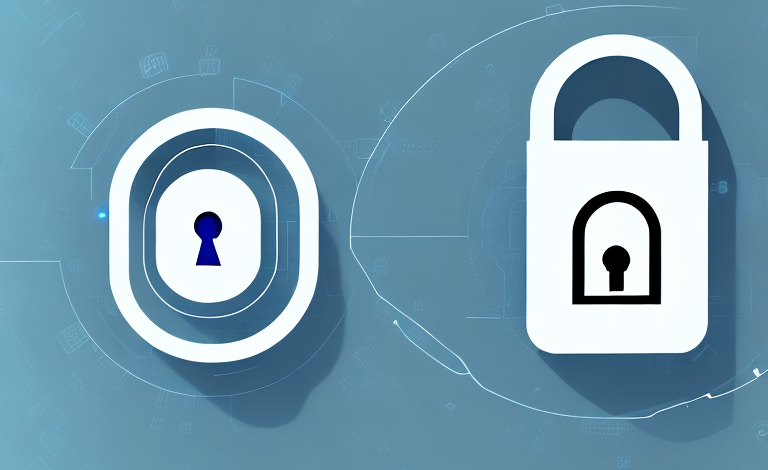Smart locks have revolutionized the way we secure our homes, enabling us to remotely control access and granting us greater control over our security. However, with the rise of smart home technology, concerns about the security of these devices have increased. The question remains: are smart locks safe from hackers?
Understanding how smart locks work
In order to determine if smart locks are safe from hackers, it’s important to understand how they work. Smart locks utilize wireless communications, such as Bluetooth or Wi-Fi, to connect to other devices and allow remote access. This connection is enabled through a mobile app that communicates with the lock to grant or revoke access based on user permissions.
Additionally, smart locks often come equipped with sensors that can detect when someone is attempting to tamper with the lock or force it open. Some smart locks also have the ability to integrate with other smart home devices, such as security cameras or alarm systems, to provide an added layer of protection.
The rise of smart home technology and the need for secure locks
Smart home technology has become increasingly popular in recent years, with more and more homeowners adopting these devices for greater convenience and control over their homes. However, the rise of this technology has also brought concerns about security, with potential vulnerabilities in smart locks being a major concern. As we continue to rely more heavily on technology to secure our homes, it’s important to ensure that these devices remain safe from hackers.
One solution to the security concerns surrounding smart locks is the use of biometric authentication. Biometric authentication uses unique physical characteristics, such as fingerprints or facial recognition, to grant access to a home. This technology is much harder to hack than traditional passwords or PINs, making it a more secure option for homeowners.
Another consideration for homeowners using smart locks is the importance of regularly updating the software and firmware of these devices. Manufacturers often release updates to address security vulnerabilities and improve the overall functionality of the device. Failing to update the software can leave the device open to potential attacks, so it’s important to stay on top of these updates to ensure the security of your home.
Types of smart locks and their vulnerabilities
There are several different types of smart locks available, each with its own unique set of vulnerabilities. For example, some smart locks utilize Bluetooth connections, which can be easily jammed or intercepted if the hacker is physically close to the lock. Other locks rely on Wi-Fi connections, which can be susceptible to attacks if the network is not properly secured.
Another type of smart lock is the one that uses biometric authentication, such as fingerprint or facial recognition. While these locks are generally considered more secure, they can still be vulnerable to attacks if the biometric data is not properly encrypted or stored. Additionally, some biometric locks may have a backup option, such as a PIN code, which can be exploited by hackers.
Smart locks that are integrated with other smart home devices, such as security cameras or voice assistants, can also pose a risk. If one of these devices is compromised, it could potentially give a hacker access to the smart lock as well. It is important to ensure that all smart home devices are properly secured and updated regularly to minimize the risk of a breach.
Can hackers really manipulate smart locks?
While it is possible for hackers to manipulate smart locks, it is not necessarily an easy feat. Most smart locks utilize encryption and secure communication protocols to protect against hacking attempts. However, vulnerabilities do exist, and it’s important for homeowners to take measures to protect themselves against potential threats.
One of the most common ways that hackers attempt to manipulate smart locks is through brute force attacks. This involves trying multiple combinations of passwords until the correct one is found. To prevent this, homeowners should ensure that they use strong, unique passwords for their smart locks and change them regularly.
Another vulnerability that smart locks face is through the use of outdated software. If the lock’s software is not updated regularly, it can become vulnerable to new hacking techniques. Homeowners should ensure that they regularly update their smart lock’s software to protect against potential threats.
Real-life examples of smart lock hacking incidents
There have been several reported incidents of smart lock hacking, including one in 2016 in which hackers were able to remotely unlock and lock a smart lock using a simple smartphone app. While these incidents are concerning, it’s important to note that they are relatively rare, and that most smart locks are secure and reliable.
Another example of smart lock hacking occurred in 2019, when researchers were able to hack into a popular smart lock brand by intercepting and manipulating Bluetooth signals. This allowed them to unlock the door without the owner’s knowledge or consent. However, the manufacturer quickly released a security patch to fix the vulnerability.
It’s also worth noting that some smart locks have been found to have vulnerabilities in their software or hardware, which could potentially be exploited by hackers. To mitigate this risk, it’s important to choose a reputable brand and keep your smart lock’s software up to date with the latest security patches.
Factors that make a smart lock secure or vulnerable
Several factors can impact the security of a smart lock, including the strength of the encryption protocol, the type of wireless communication used, and the level of access control granted to users. It’s important for homeowners to do their research and choose a smart lock that is known for its security features.
Another important factor to consider when evaluating the security of a smart lock is the physical design of the lock itself. Some smart locks have been known to have vulnerabilities in their physical construction, such as weak materials or easily bypassed mechanisms. Homeowners should look for smart locks that have been tested and certified by reputable security organizations.
In addition, the security of a smart lock can also be impacted by the software and firmware that it runs on. Like any software, these components can have bugs or vulnerabilities that can be exploited by hackers. It’s important for homeowners to regularly update their smart lock’s software and firmware to ensure that any known security issues have been addressed.
How to protect your home from smart lock hacking
There are several steps homeowners can take to protect their homes from smart lock hacking attempts. These include choosing a secure smart lock, keeping the lock’s firmware updated, using strong and unique passwords for all connected devices, and monitoring network traffic for signs of suspicious activity.
Another important step to protect your home from smart lock hacking is to disable remote access to the lock. This means that the lock can only be controlled physically, with a key or by being physically present at the lock. While remote access can be convenient, it also increases the risk of hacking attempts. Disabling remote access ensures that only authorized individuals can control the lock, reducing the risk of unauthorized access.
Best practices for securing your smart lock
In addition to the steps listed above, there are several best practices homeowners can follow to further secure their smart lock. These include disabling unnecessary features, such as remote unlock or access sharing, and limiting access permissions for users.
Another important best practice is to regularly update the firmware of your smart lock. Manufacturers often release updates that address security vulnerabilities and improve overall performance. It is also recommended to use a strong and unique password for your smart lock account, and to enable two-factor authentication if available. Additionally, consider installing a physical barrier, such as a security camera or motion sensor, to further deter potential intruders.
Future advancements in smart lock technology and security measures
As technology continues to advance, it’s likely that smart lock security measures will improve as well. For example, new encryption protocols and secure communication standards may emerge, providing greater protection against hacking attempts.
In addition to improved security measures, future advancements in smart lock technology may also include more advanced features such as facial recognition and voice activation. This could allow for even more convenient and secure access to homes and buildings.
Furthermore, smart locks may become more integrated with other smart home devices, such as security cameras and alarm systems. This could create a more comprehensive and interconnected security system, providing even greater peace of mind for homeowners and building managers.
The importance of regular updates and maintenance for your smart lock
Regular updates and maintenance are critical for maintaining the security of your smart lock. This includes installing firmware updates as they become available, monitoring the lock for signs of suspicious activity, and ensuring that all connected devices are secure and up to date.
One of the main reasons why regular updates and maintenance are important for your smart lock is to prevent hacking attempts. Hackers are constantly looking for vulnerabilities in smart locks and other smart home devices, and outdated software can make it easier for them to gain access to your home. By keeping your smart lock up to date, you can reduce the risk of unauthorized access and protect your home and family.
In addition to security concerns, regular updates and maintenance can also improve the performance and functionality of your smart lock. Firmware updates may include bug fixes, new features, and improvements to the user interface. By staying up to date with these updates, you can ensure that your smart lock is working at its best and taking advantage of all the latest technology.
Alternatives to smart locks: traditional vs digital security options
For homeowners who are concerned about the security risks associated with smart locks, there are several traditional and digital security options available. These include traditional deadbolts, home security systems, and biometric security measures such as fingerprint scanners.
Traditional deadbolts are a reliable and time-tested security option that many homeowners still prefer. They are simple to use and install, and they do not require any additional technology or maintenance. Home security systems, on the other hand, offer a more comprehensive approach to home security. They can include features such as motion sensors, surveillance cameras, and remote monitoring, which can provide homeowners with greater peace of mind.
Conclusion: Are smart locks worth the risk?
Ultimately, the decision of whether or not to use a smart lock comes down to personal preference and the level of risk you are comfortable with. While there are certainly risks associated with using a smart lock, these risks can often be mitigated by following best practices and taking steps to ensure the security of your system. With the right precautions in place, smart locks can provide a convenient and secure way to control access to your home.
It is important to note that smart locks are not foolproof and can still be vulnerable to hacking or other security breaches. It is recommended to regularly update the firmware and software of your smart lock and to use strong, unique passwords. Additionally, it is important to be aware of potential vulnerabilities in your home network and to take steps to secure it. Overall, while smart locks can offer convenience and security, it is important to weigh the potential risks and take necessary precautions to ensure the safety of your home and family.



